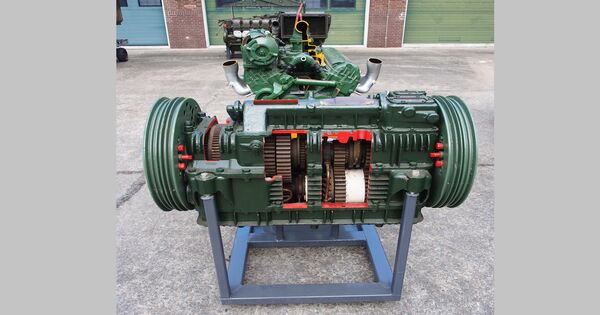Tank steering systems enable a tank or other continuous-track vehicle to turn. Because the tracks cannot be oriented relative to the hull (in any practical design), steering is performed by speeding up one track, slowing down another (or reversing it), or a combination of the two. Half-track vehicles avoid this issue by combining steerable wheels with fixed-speed rails.
Early steering systems were derived from tracked work vehicles, and often included a clutch to decrease power to one track, causing it to slow down. These designs have various issues, particularly when climbing hills or running at high speeds, because the decrease in power causes the overall speed to reduce. Delivering electricity to both tracks while rotating at different rates is a significant design challenge.
Here’s how they generally work:
- Two Independent Drive Motors: Tanks typically have two sets of tracks, each driven by its own motor. These motors can be electric, hydraulic, or internal combustion engines depending on the design of the tank.
- Differential Speed Control: To turn the tank, the speed of one track is slowed down or stopped while the other track continues to move at its normal speed. This difference in speed causes the tank to rotate around its center axis. For example, if the right track slows down or reverses while the left track continues forward, the tank will turn left, and vice versa.
- Control Mechanisms: The control mechanism for tank steering can vary. It may involve levers, joysticks, or steering wheels for manual control, or it can be electronically controlled through a computerized system.
- Turning Radius: The turning radius of a tank is determined by the difference in speed between the two tracks. A larger speed difference results in a tighter turn, while a smaller speed difference results in a wider turn.
- Precision Control: Advanced tank steering systems use sensors and computer algorithms to provide accurate control, enabling smooth operation and agility in a variety of terrains and situations.
A series of more advanced systems were produced, particularly during World War II, that kept power on both tracks while steering, a concept known as regenerative steering. Some also permitted one track to go forward while the other reversed, allowing the tank to spin in place, a technique known as neutral steering. The first truly effective system was the British double differential design of 1924, which was adopted by both the United States and Germany.
Most recent Western designs employ a variant of the double differential, but Soviet designs chose to house two distinct transmissions in a single housing. Electric motors with variable speed controllers have been tested on several occasions, but they have not yet become widely used.
Overall, tank steering systems provide great agility and control, allowing tanks to successfully move over harsh terrain, confined places, and combat situations.
















